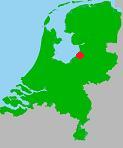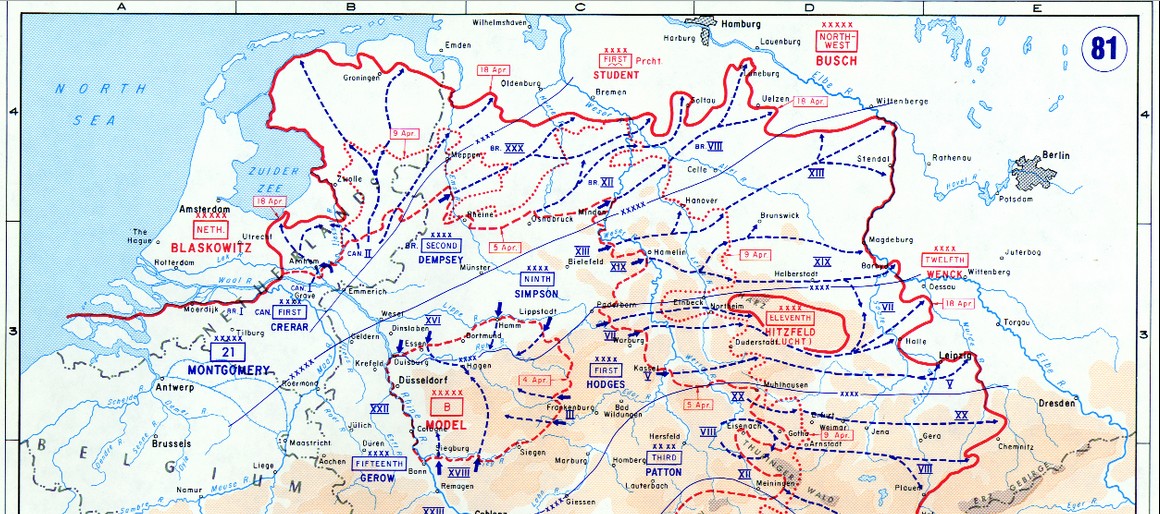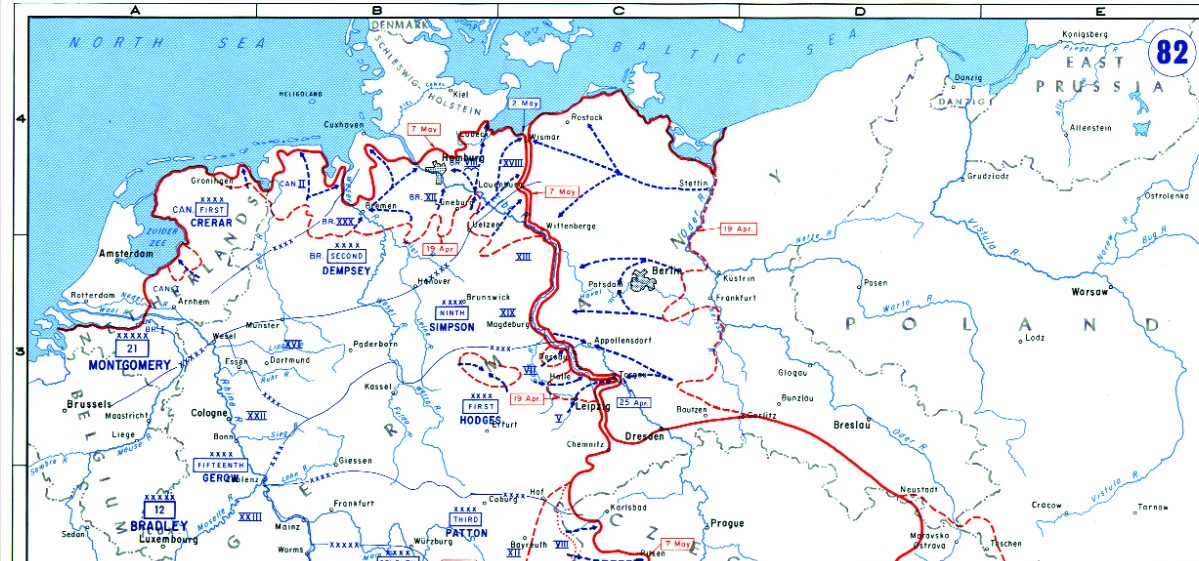

Relation with Lake (class): Lake Area Cemetery (LAI)
Total nr. of casualties buried here (TC) end WW2: at least 9, today 7.
Lake casualties, initially, end WW2 (LC-I): 1
Unknown today: 0
of which unknown from Lake (LC-U): no info
of which unknown from North Sea (NS-U): 0
Initial burial site in WW2: yes, Lake Cemetery East West side of Lake (LCE)
Post war burial site for collection and reburial from other sites: no
Cemetery with Lake casualties today: no
DOORNSPIJK GENERAL CEMETERY
This is one of three cemetery in and around Elburg with war graves. Doornspijk is to the south-west of Elburg. This cemetery is outside Doornspijk on the N310 road to Elburg. Lancaster bomber ED618 fell here to the ground in pieces in the night of 9 on 10 April 1943, very close to this cemetery. Only the body of pilot W/O Jack D. Steel (Canada) and Sgt. D'Arcy Gould could be identified. Jack Steel was buried in grave no. 1 (headstone most left) and Sgt. Gould in grave no. 6 (the headstone most right). In between them, the mixed remains were buried of the five crew members in a collective grave, consisting out of 4 coffins. In the 1950's, each men received his own headstone. in 1944, also 2 American airmen were buried here in grave no. 7 and 8.


Dutch name cemetery: Doornspijk Alg. Begraafplaats.
Full name: Doornspijk General Cemetery.
Address (usable for car navigation):
Goorweg 2, or Zuiderzeestraatweg 14, Doornspijk.
For reaction or comments; send us an email,
see address and info at CONTACT.
Please use as subject title: 'Doornspijk'.
Below photo shows the cemetery entrance and parking alongside the N310 road Doornspijk - Elburg.

.

Photo below: the war grave with Canadian flag is grave no. 1 and the grave nearest to the camera is grave nr. 6 (crew Lancaster ED618, night 9/10 April 1943).
On 21 May 1944, a low flying P-38 Lightning was hit by 20mm Flak and made an emergency landing on a sandy heath nearby, which was (en is) used as military training ground. A training German armoured tank company shot the P-38 down. This was on the south section of the Oldenbroeker Heath, south of army barracks 't Harde. The name of the terrain there is Doornspijkse Heath. American pilot 1Lt. Henry Warwick was throw from the cockpit and was killed. The Germans took some pictures of him, laying next to his burning aircraft. Lt. Warwick was buried on the closest-by cemetery, which was here in grave 7, next to Sgt. D'Arcy Gould.
In 1944 until 25 April 1945, Doornspijk had 5km of Lake IJsselmeer (Old Zuyder Sea) coastline in its care. S/Sgt. Frank H. Pietszch, crew of USAAF bomber B-24H 42-95180, parachuted in the lake on 21 November 1944 near Spakenburg and was buried here months later. This completed the crew of 42-95180. S/Sgt. Pietszch was buried here in grave 8. This is where now the grey civilian gravestone is (right). This civil grave is of year 1965.

.

_

The 4 unknown war victims in Doornspijk.
Map below: 18 April 1945. On this date a spearhead of the Canadian army reached the Zuyder Sea coastline to the south of here. This action created an encircled area between here and Zwolle. German front troops (Fallschirmjäger and Waffen-SS) in this sack were surrounded by the Canadian first army. The Germans tried to escape to the west (Amsterdam area) via this coastline on every boat they could find, or tried to break-out the pocket by storming and overflooding the thin Canadian western flank on specific locations.
After the war, on the right side on the row with the Allied war graves, 4 bodies were found buried in one grave. The English and American Grave registration and recovery companies that came to Doornspijk at least 3 times between May 1945 and December 1947, must have examined these remains, because a cross was placed by them with English text: "UNKNOWN '40-'45". The dead were probably dressed in civilian clothes, otherwise the text would have been 'Unknown soldiers'.
In 2010 the Dutch Army Identification Service exhumed the 4 skeletons for an examination and identification attempt. In December 2012 they reported in the media that the remains were of 3 men and one older woman. The men had the hands tied behind the back with a nylon cord and were killed by the shot of a handgun in the neck. Identity could not be established. DNA was taken, no match was found.
We believe the 4 were prisoners of the German front troops that found/encountered them during the retreat from the pocket in their race to the shore. At that time, the pocket (a wooded area named the Veluwe) harbored a lot of people in hiding, Jews, resistance fighters, Allied airmen, evading battle of Arnhem British paratroopers (in civilian clothes) and their Dutch helpers in safehouses/farms. The Germans could not take the four with them and executed them between April 15 and April 19, 1945.

Map frontline April 19 - 07 May 1945.

Sources:
- MACR
- Local police report 1943
- Newspaper articles
- Interviews
© ZZairwar (Zuyder Zee Air war)
File 929. Doornspijk Cemetery Allied War Graves
- Details